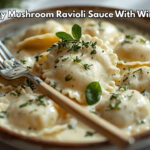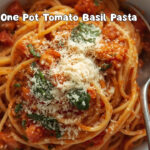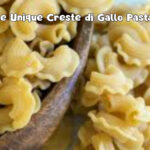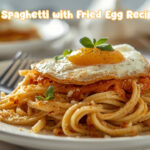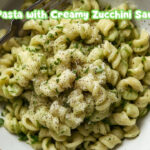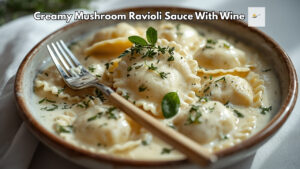Table of Contents
ToggleAre you looking for a delicious pasta dish perfect for a small gathering? Swiss cheese pasta is the answer! With its creamy sauce and rich melt-in-your-mouth, this recipe is designed to serve four people and bring a touch of elegance to any meal.
Whether you’re cooking for family or friends, this dish combines simplicity with extraordinary flavor. Follow this guide to create a mouth-watering Swiss cheese pasta that will impress everyone at your table. Let’s get cooking!
Ingredients for Swiss Cheese Pasta (Serves 4)
Here’s what you’ll need to make Swiss cheese pasta. First, I’ll list the ingredients and their amounts, then walk you through the step-by-step process. So, stick with me!
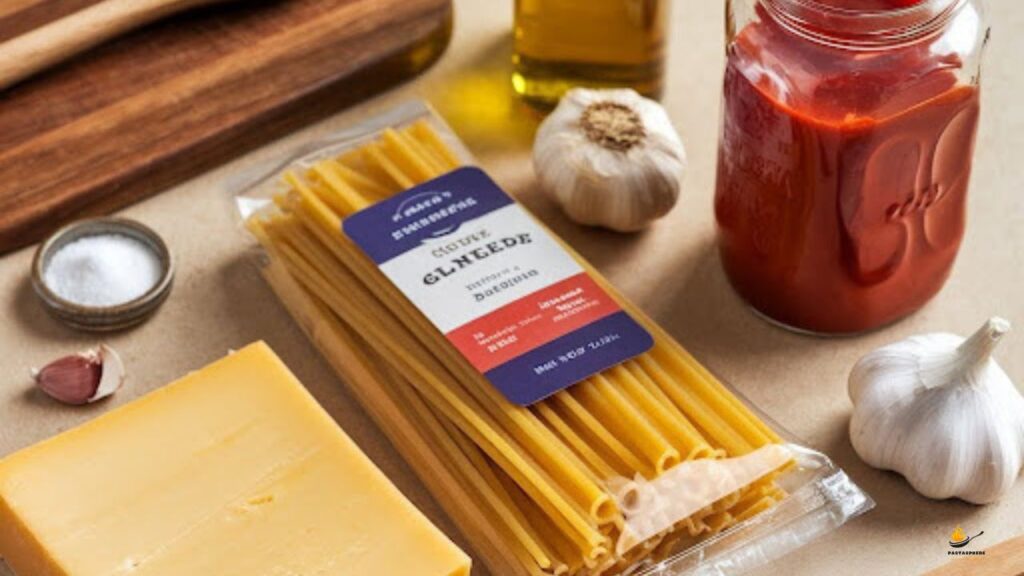
- Pasta: Use 12 ounces (about 340 grams) of broad egg noodles. I love using broad egg noodles for this recipe, as they work wonderfully for this dish but feel free to choose any type of pasta you enjoy.
- Swiss Cheese: You’ll need 2 cups (about 200 grams) of shredded Swiss-type cheeses. A mix of Semi-soft and Semi-hard cheeses is ideal for the best melting and flavor. Opt for a richer taste of high-quality Swiss cheese, preferably from traditional cheeses.
- Milk-Based Food: To create the creamy sauce, you’ll need 2 cups (about 480 milliliters) of Cow’s milk. This will serve as the base of your cheese sauce.
- Butter: 3 tablespoons (about 42 grams) will add richness and depth to your sauce.
- Flour: To thicken the sauce, use 3 tablespoons (about 24 grams) of flour.
- Salt and Pepper: Season to taste to enhance the overall flavor of the dish.
How to Prepare Swiss Cheese Pasta
Now, I’ll guide you how to make this Swiss cheese pasta, which my family loves and thinks I make best. Follow these steps to make it perfectly, just like I do!
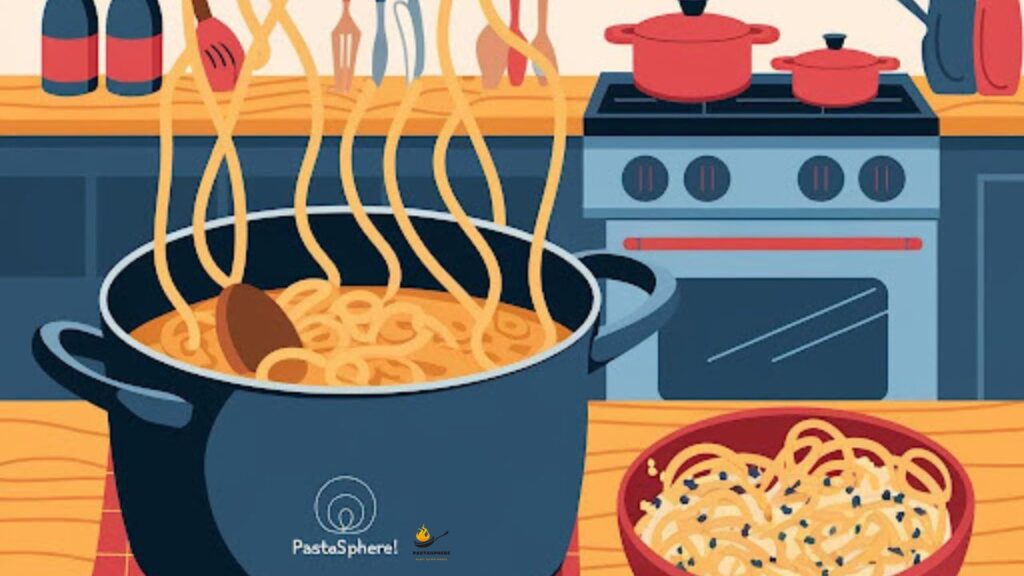
Step 1: Cooking the Pasta
- Boil Water: Bring a large pot of salted water to a boil. I like to add a pinch of salt to enhance the flavor of the pasta.
- Cook the Pasta: Add 12 ounces (about 340 grams) of broad egg noodles once the water is boiling. Cook them according to the package instructions until they’re just al dente, which usually takes about 8-10 minutes.
- Drain the Pasta: Drain the pasta and set it aside after cooking. I love how the pasta holds its shape and texture, making it perfect for a creamy cheese sauce.
Step 2: Making the Cheese Sauce
- Melt the Butter: In a large saucepan, melt 3 tablespoons of butter over medium heat. I use medium heat to ensure the butter melts evenly without burning.
- Create a Roux: Once the butter is melted, add 3 tablespoons of flour, stirring constantly. This will form a roux that helps thicken the sauce.
- Whisk in the Milk: Gradually whisk in 2 cups of Cow’s milk to avoid lumps. I find that whisking slowly and continuously helps keep the sauce smooth.
- Thicken the Sauce: Cook and stir the mixture until it thickens, usually in just a few minutes.
- Add the Cheese: Stir in 2 cups of shredded Swiss-type cheeses. I prefer a mix of Semi-soft and Semi-hard cheeses for a rich, gooey texture.
- Melt the Cheese: Continue to stir until the cheese melts completely and the sauce becomes smooth.
- Season: Season with 1/2 teaspoon of salt and 1/4 teaspoon of pepper to taste. This is where the sauce comes together, turning into a creamy, cheesy delight.
Step 3: Combining Pasta and Cheese Sauce
- Mix Pasta and Sauce: Mix the cooked pasta with the cheese sauce, ensuring every noodle is well-coated. I always thoroughly combine the pasta and sauce to get that rich, cheesy flavor.
- Transfer to Baking Dish: Transfer the pasta mixture to a lightly greased baking dish once mixed. This step prepares it for baking and prevents sticking.
Step 4: Baking the Pasta
- Preheat the Oven: Preheat your oven to 375°F (190°C). Baking the pasta gives it a wonderful texture with a crispy, golden top layer everyone loves.
- Bake the Pasta: Bake the pasta for about 20-25 minutes or until the top is bubbly and golden brown.
I’ve explained my method step by step here, but if you want more info, you can watch this video for visual understanding: Watch the video here. It will help clarify any doubts you have.
Now that you know the process, let’s explore the cheese textures and why Swiss cheese is ideal for this recipe. I’ll share some tips on why it’s perfect and how to make the most of it.
Understanding Cheese Textures

Cheeses come in various textures, and knowing these can help you choose the right one for your recipes:
- Extra-Hard: Perfect for grating over dishes.
- Hard: Adds a strong, robust flavor.
- Semi-Hard: Balances meltability and flavor.
- Semi-Soft: Ideal for creamy sauces.
- Soft: Great for spreading on bread.
- Fresh: Mild and creamy, perfect for light dishes.
Why Swiss Cheese Works So Well
Swiss cheese works well because its mild flavor and nutty taste enhance dishes. Its elastic texture and ability to melt smoothly at high temperatures ensure a creamy, consistent sauce. Made from Cow’s milk, it adds richness and smoothness to pasta sauces. The cheese often comes in large wheels with a hard rind, which helps maintain its excellent melting properties.
Tips for Perfect Swiss Cheese Pasta

- Adjusting Quantities: If you’re cooking for more than four people, simply double or triple the ingredients according to your needs. For example, for eight people, use 24 ounces of pasta, 4 cups of cheese, and so on.
- Melting Cheese: To avoid a grainy texture, melt the cheese at a medium temperature and stir constantly.
- Storage: Leftover pasta can be stored in an airtight container in the refrigerator for up to three days. Reheat in the oven for the best texture.
I’ve shared some tips here, but I’m also giving you a Quora forum link where users have discussed essential tips. Check it out for more helpful advice!
Personal Experience: Why I Love This Recipe
I love making Swiss cheese pasta for family dinners. The creamy Swiss cheese, whether from Cow’s milk, sheep’s milk, or Goat’s milk, melts beautifully, adding a rich flavor to the dish. It’s versatile, letting me include extras like chicken or veggies. This classic traditional recipe is a favorite in Italian cuisine, and Swiss-type cheeses with a long shelf-life make it easy to enjoy at any time.
Conclusion
Making Swiss cheese pasta is straightforward and rewarding. Cook the pasta, prepare a creamy cheese sauce, mix them, and bake until golden. This simple process produces a rich, flavorful dish that everyone will love. I hope you enjoy making this Swiss cheese pasta as much as I do. For more delicious recipes and tips, keep following Pastasphere!
FAQs
1. Can I add vegetables to this Swiss cheese pasta?
Absolutely! You can add vegetables like broccoli, bell peppers, or mushrooms. Just cook them first to ensure they’re tender before adding them to the pasta.
2. How can I make the pasta sauce spicier?
Add a pinch of cayenne pepper or a dash of hot sauce to the cheese sauce while cooking to give it an extra kick. Adjust to taste based on your preference.
3. What are some good side dishes to serve with Swiss cheese pasta?
This dish pairs well with a fresh green salad, steamed vegetables, or garlic bread to balance the rich, creamy pasta.
4. How can I reheat leftovers without drying them out?
Reheat leftovers gently in the oven at 350°F (175°C) covered with foil or in the microwave with a splash of milk to keep the pasta moist.
5. What’s the best way to store Swiss cheese pasta?
Any leftover pasta can be stored in an airtight container in the fridge for up to 3-4 days. If you want to keep it longer, you can freeze it for up to 3 months.




